Staycation destination: Resettled community seeing influx of visitors
No one has lived in Sandy Point for nearly half a century, but interest in the resettled community off the coast of Newfoundland is suddenly on the rise.
Located on land that juts out into St. George's Bay, or Bay St. George, the area has seen more visitors this summer than it has in many years, and people with roots in the resettled community are pleased.
"It makes me feel really proud," said Richard Legge, whose great-great-grandparents are buried on Sandy Point.
He estimates that a typical year might bring a few hundred visitors, but that the number of visitors this year has more than quadrupled, to more than 2,000.
"I love the place. I love going over there," he said.
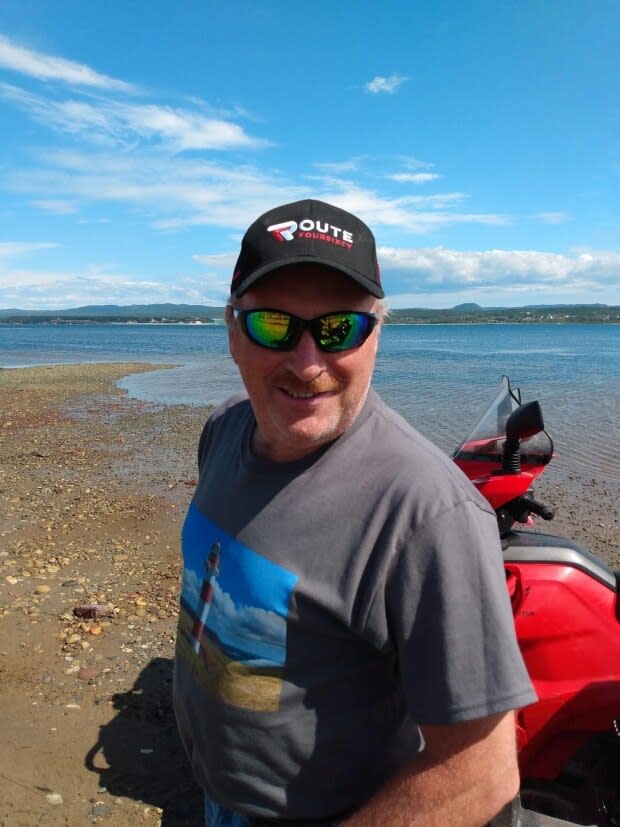
Serving the needs of visitors
At low tide, Sandy Point is located on a peninsula extending outward near the community of Flat Bay, and people can hike or ride ATVs to get there. At high tide, sea water sometimes rises above the lowest point to create an island.
Legge and other volunteers take full advantage of the chance to travel there by ATV. They've spent much of the summer fundraising and planning projects to make Sandy Point more visitor-friendly.

Picnic tables, firepits, outhouses, an enclosed water well and pump, and signage have been added.
Legge also spent time restoring the final resting place of some of his ancestors, whose graves had caved in over the years.
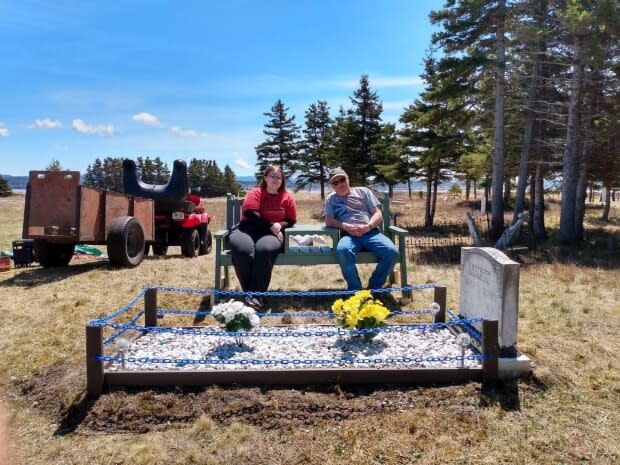
Legge has been doing a bit of upkeep on Sandy Point for the past few years but this summer he decided to place a guest book there to try to track where the visitors are coming from.
Once the fall comes, he said, he'll take the book home to count the signatures and get a sense of who's visited.
"It's a place to bring your family," said Legge.
"People got relatives buried over there, and they really enjoy going over for the day, taking their family over for a picnic, boiling up some food, having a fire in the firepit, and visiting the graves of their ancestors."
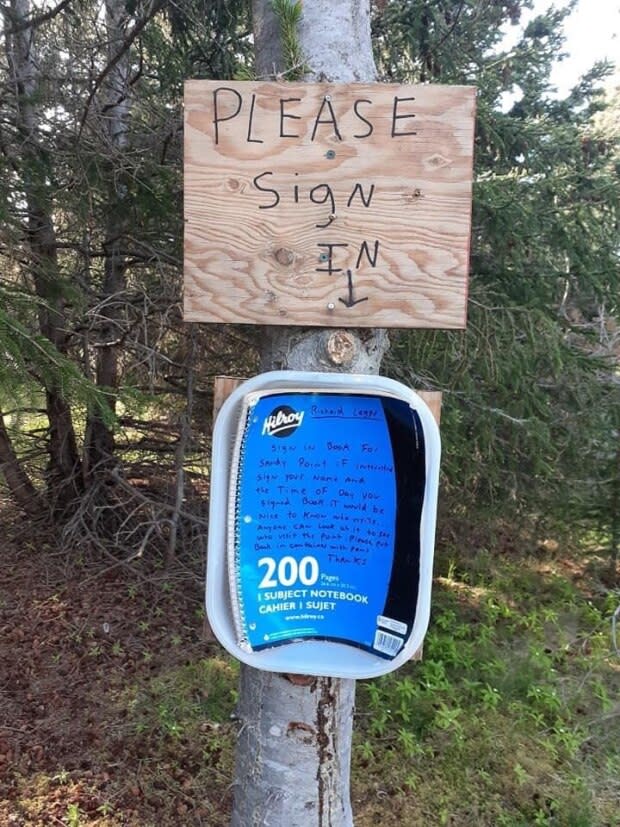
Need to protect
But all the increased activity on Sandy Point hasn't gone unnoticed by those trying to protect the area's ecological integrity.
Parts of the island are owned by the Nature Conservancy of Canada, and are under protection as a nature reserve, because of Sandy Point's unique wildlife, including the endangered piping plover, and plants such as seaside lavender and saltwater cordgrass.
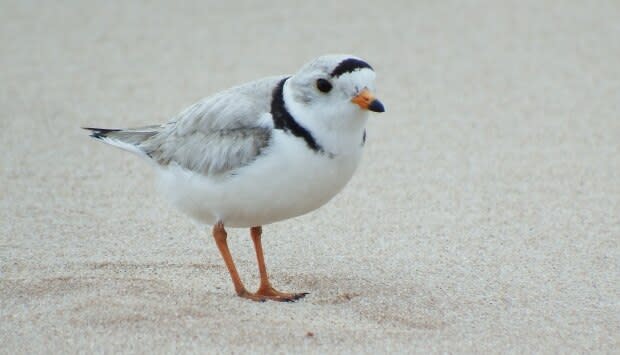
Julia Lawler, the NCC's stewardship co-ordinator in Newfoundland and Labrador, said she's received calls this summer from people worried about ATV use and the construction of infrastructure such as outhouses.
Even though the NCC owns only a small portion of Sandy Point, about 67 acres, said Lawler, the group has in the past taken responsibility for protecting the whole island. As a result, she said, public perception may be that the entire land mass of nearly 800 acres is a nature reserve, which is not accurate.
Caution advised
Lawler herself visited Sandy Point this summer and witnessed ATV use and camping, but she said it appeared most people were taking care not to disturb the area's natural beauty.
"I think that it's exciting that so many people are getting out and getting to know Sandy Point. It's a really special place," said Lawler.

However, Lawler cautioned that with increased activity there's an increased potential for damage to the area.
She said she hopes all visitors to Sandy Point will be mindful of the need to avoid beach areas during the bird nesting season in June and July.
Lawler also encouraged people to stick to the trails when riding ATVs on Sandy Point, and to pack out any garbage that they have with them.
"It's always good just to let wildlife be wild, and let those animals do their thing as we do our thing," she said.
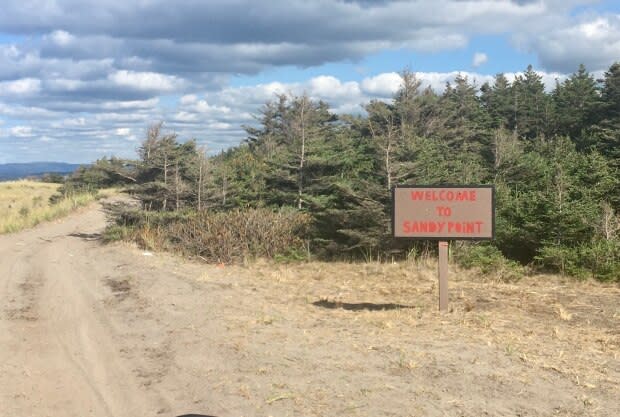
Looking out for the island
Legge agreed that the unique history and environment of Sandy Point means the area deserves protection.
He said he believes most visitors are mindful of that.
"I got no concerns," said Legge.
"They respect the place, they follow the trails, they do no harm."
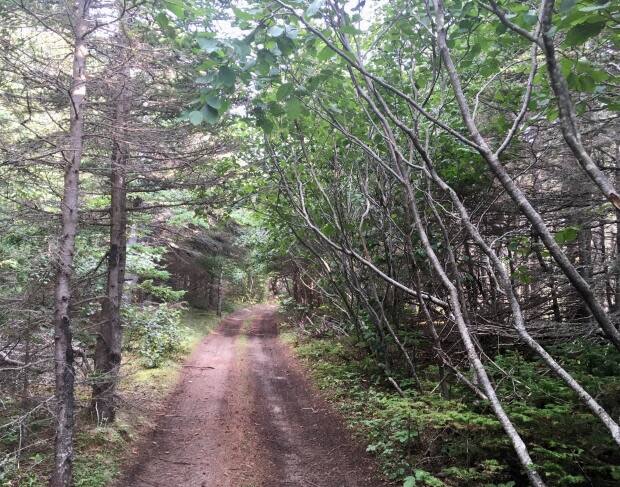
Legge said he's also heard concerns about the impact visitors might be having, including people feeding foxes on Sandy Point, and he advised people to leave the animals alone in their natural habitat and not interfere with them.
Legge said he's confident people will do that.
Read more from CBC Newfoundland and Labrador


